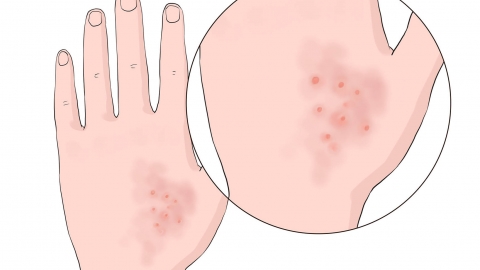What should I do if I have a tumor on my hand?
Under normal circumstances, tumors on the hand may be caused by prolonged friction and irritation, post-traumatic tissue proliferation, sebaceous cysts, ganglion cysts, lipomas, and other reasons. Patients can choose appropriate treatments such as conservative management, medication, or surgery based on their specific condition. Detailed analysis is as follows:

1. Prolonged Friction and Irritation
Repeated contact with hard objects or persistent friction on the hand can lead to local tissue proliferation, forming benign nodule-like tumors. Reduce frequency of friction, wear gloves during work to protect the hands, avoid repeated stimulation of the affected area, soak hands in warm water daily to promote local blood circulation, and monitor changes in the nodule.
2. Post-Traumatic Tissue Proliferation
After hand injury, excessive tissue growth may occur during the healing process, resulting in a raised, tumor-like hard mass. Avoid scratching or squeezing the proliferated area. Gentle massage may help soften the tissue. If hand function is affected, rehabilitation exercises under medical guidance can aid in restoring hand mobility.
3. Sebaceous Cyst
Obstruction of sebaceous gland ducts on the hand leads to accumulation of sebum and formation of a cyst, typically appearing as a round lump, which is prone to secondary infection. In non-infected cases, observation may suffice. If redness, swelling, or pain occurs, topical medications such as mupirocin ointment, fusidic acid cream, or compound polymyxin B ointment may be used under medical supervision. After inflammation subsides, surgical excision of the sebaceous cyst can be performed.
4. Ganglion Cyst
Accumulation of synovial fluid around joints or tendons in the hand forms a cystic mass, which may feel tender when pressed. Local massage and warm compresses may help promote absorption of the cyst. If the cyst is large or causes significant pain, medications such as ibuprofen sustained-release capsules, diclofenac sodium sustained-release tablets, or naproxen tablets may be taken under medical advice for pain relief. Surgical removal may be necessary if symptoms persist.
5. Lipoma
A lipoma results from abnormal proliferation of fat tissue in the hand, usually soft in texture and movable, and generally asymptomatic. Small, asymptomatic lipomas do not require treatment. If the lipoma affects appearance or hand function, surgical removal can be performed. Postoperatively, keep the wound clean and dry, avoid contact with water to prevent infection, and change dressings regularly to promote healing.
In daily life, it is important to protect the hands by avoiding frequent friction or trauma; use protective measures during physical work to minimize tissue damage; maintain clean hand skin to prevent sebaceous duct blockage; seek timely medical evaluation upon discovering any hand tumor to determine its nature—avoid self-treatment; follow medical instructions for postoperative care to support functional recovery, and attend regular follow-up visits to ensure no recurrence.




